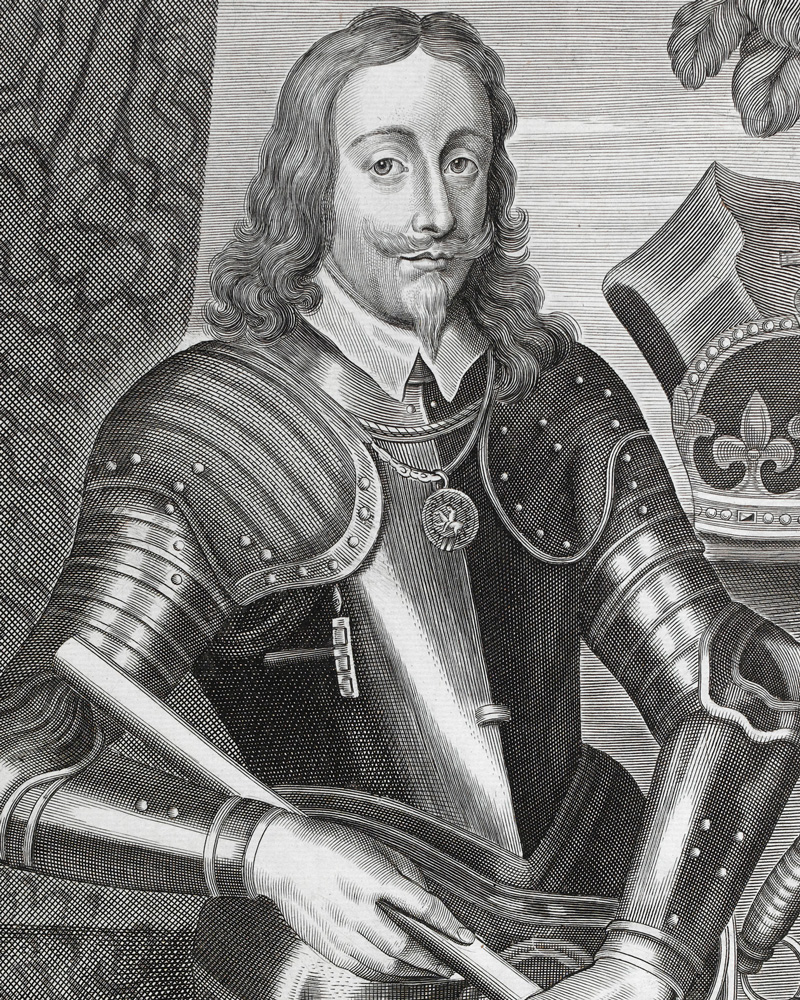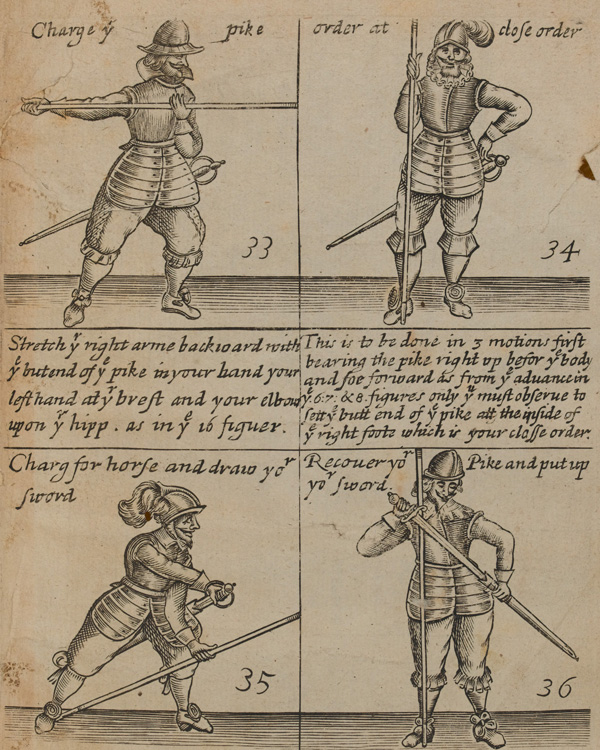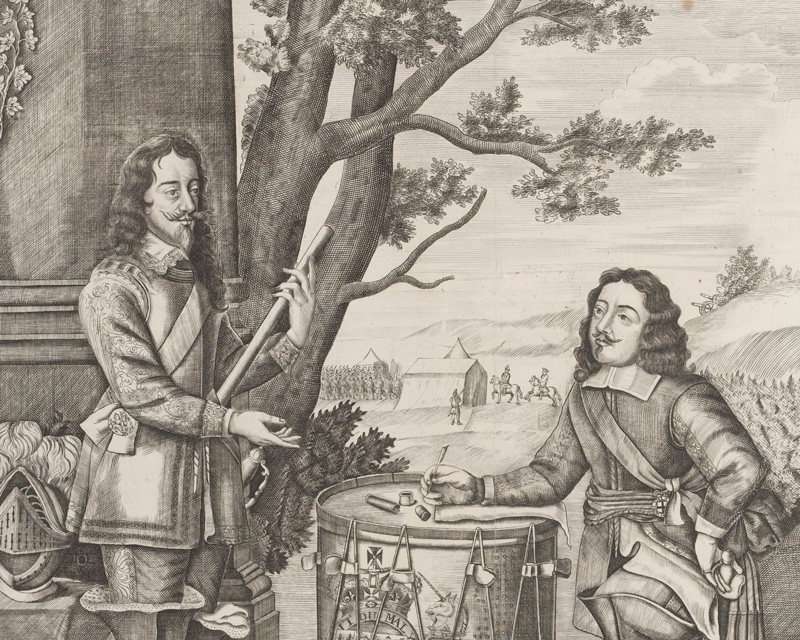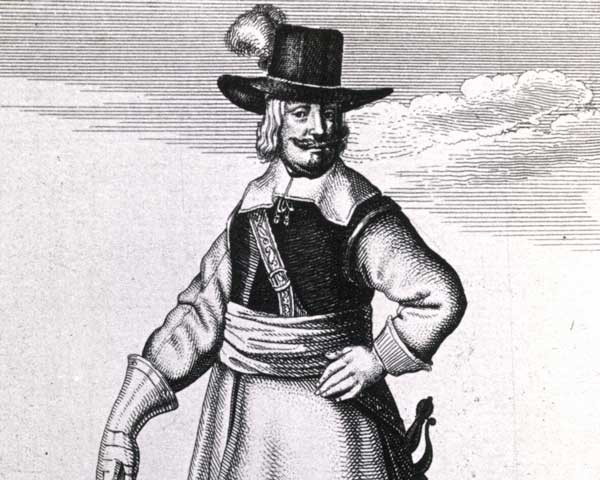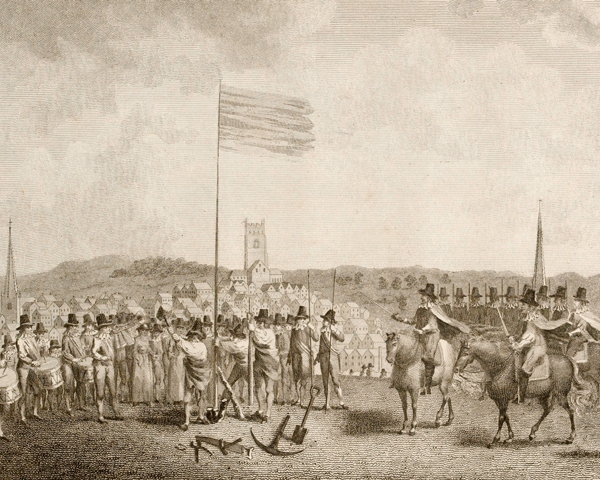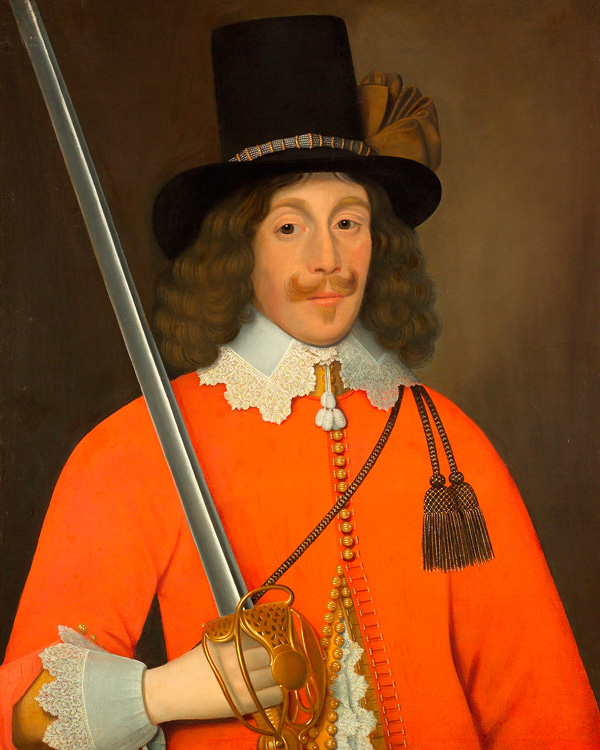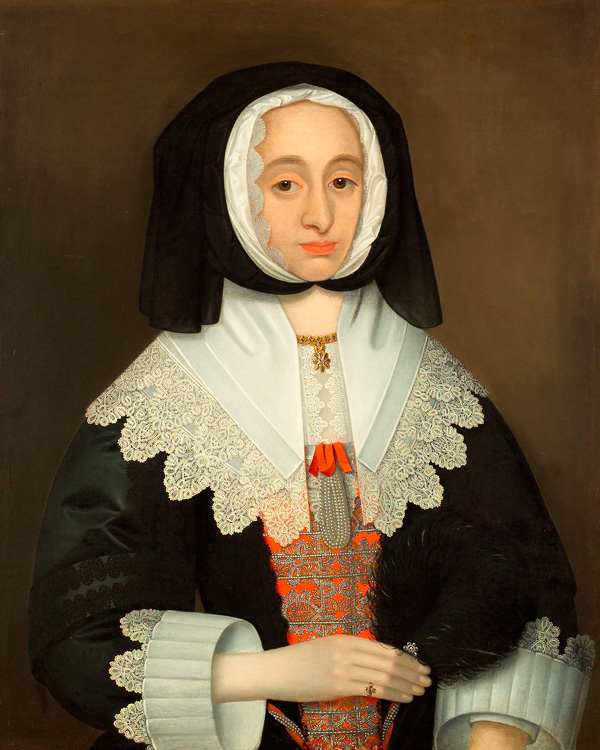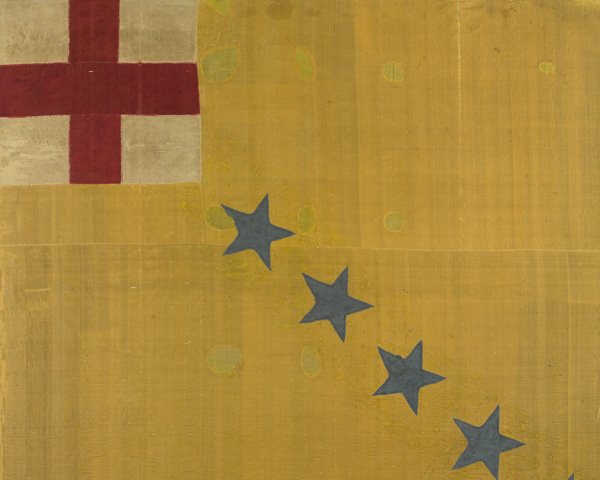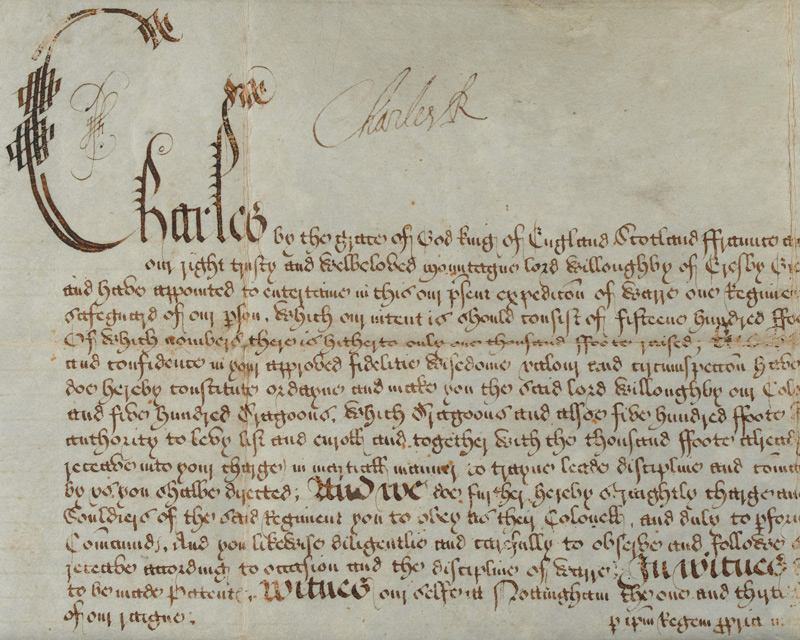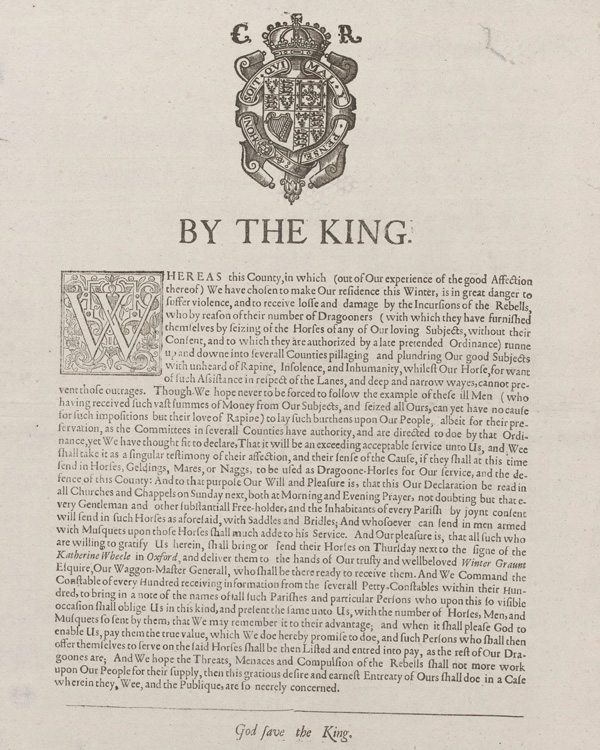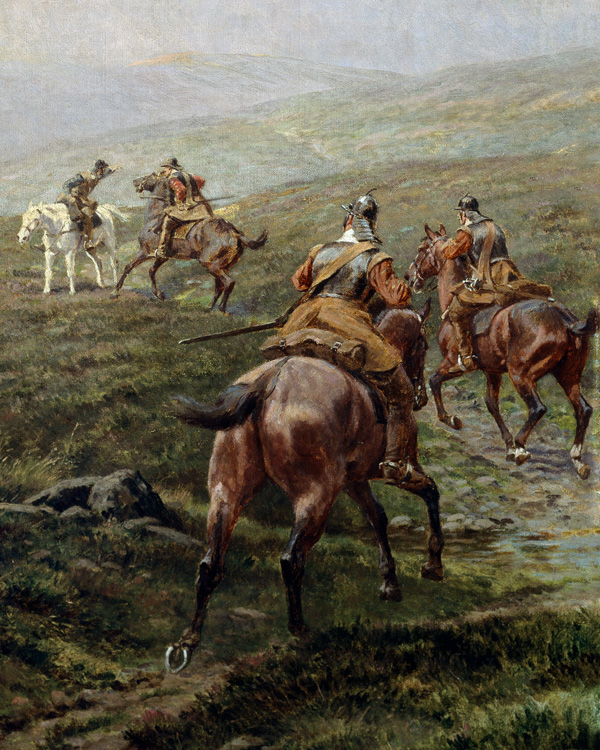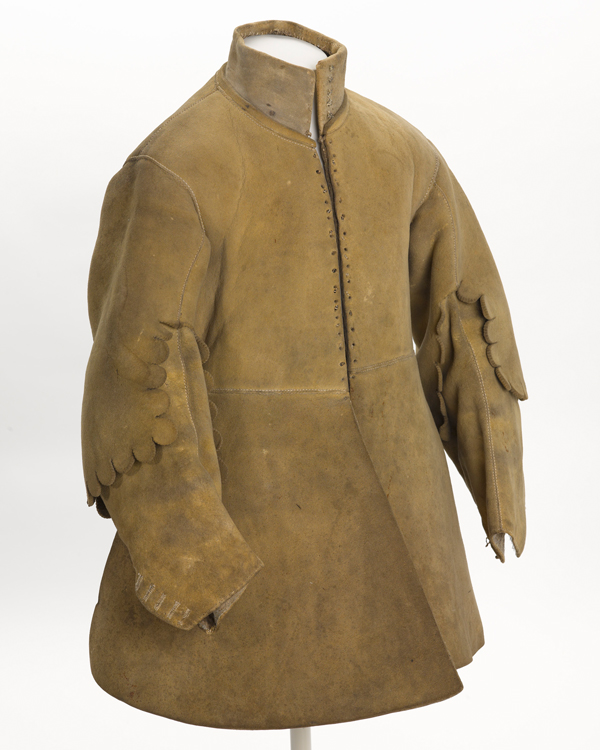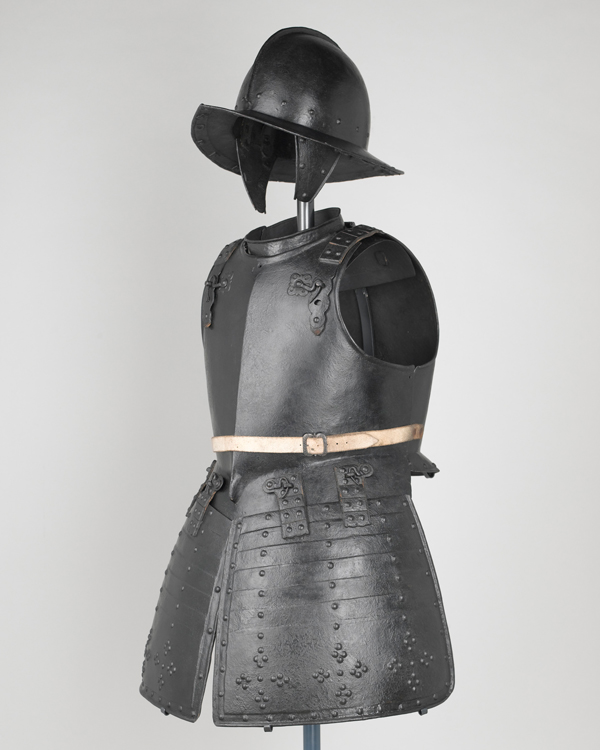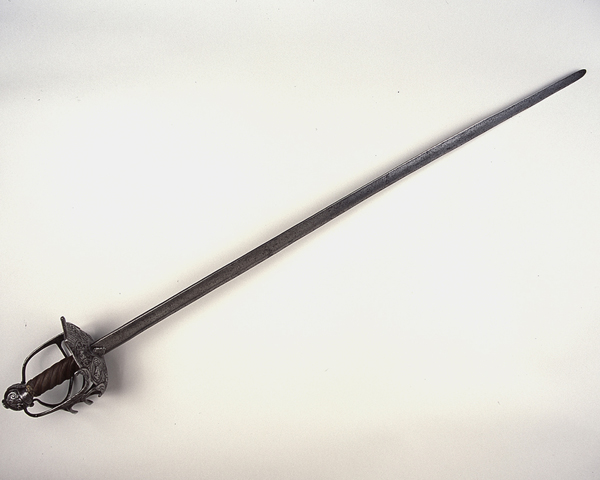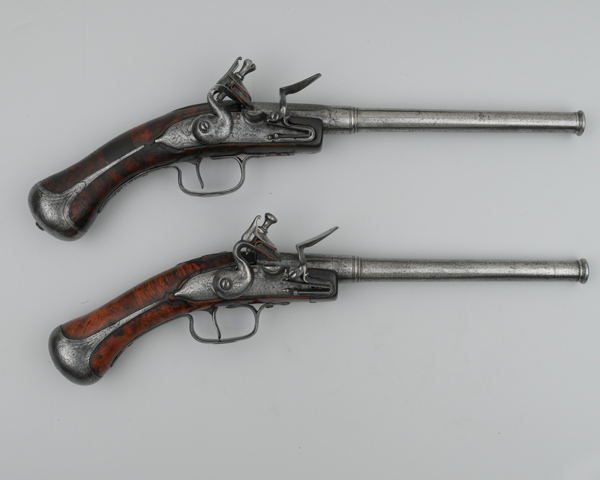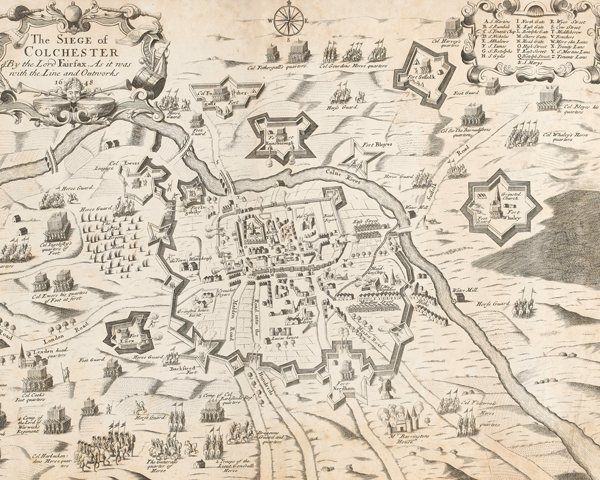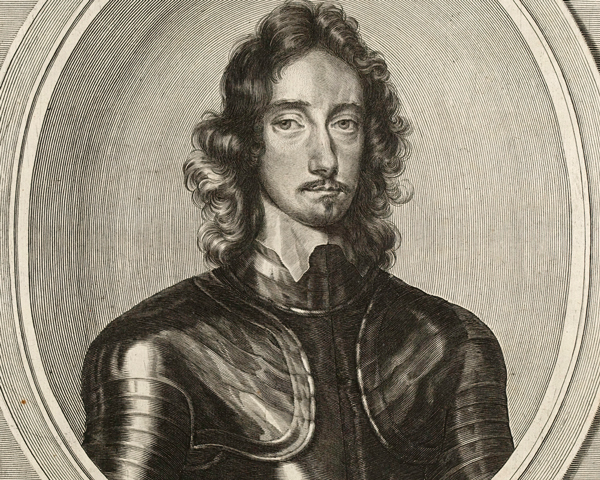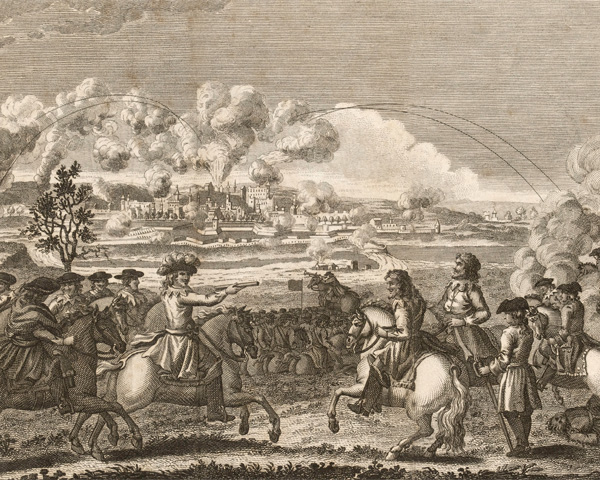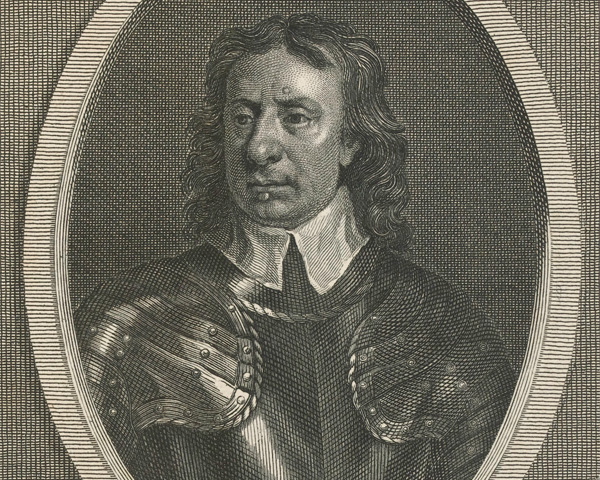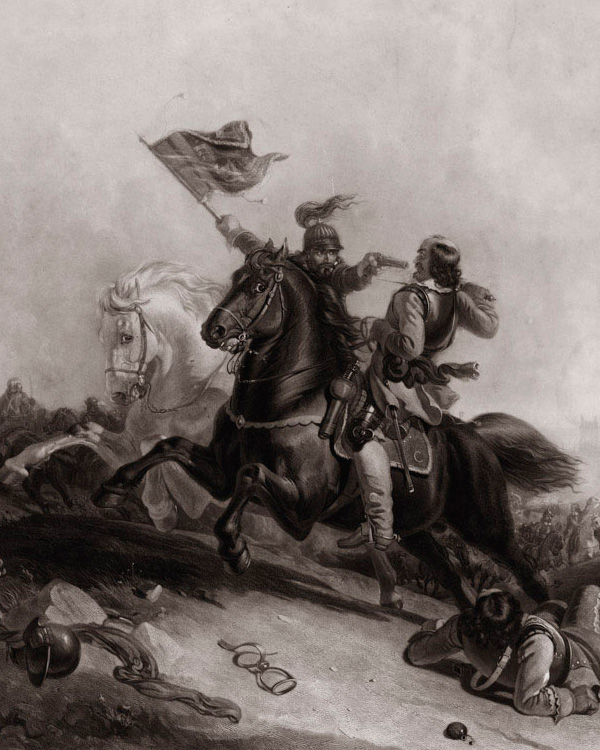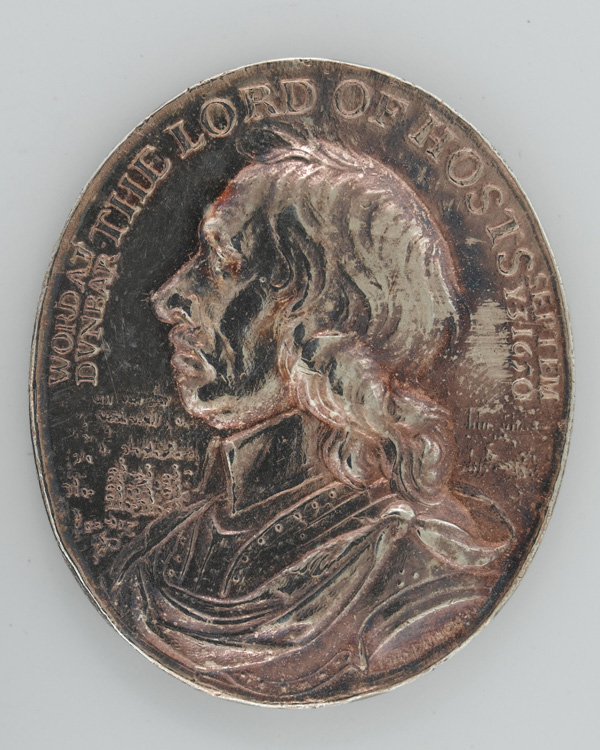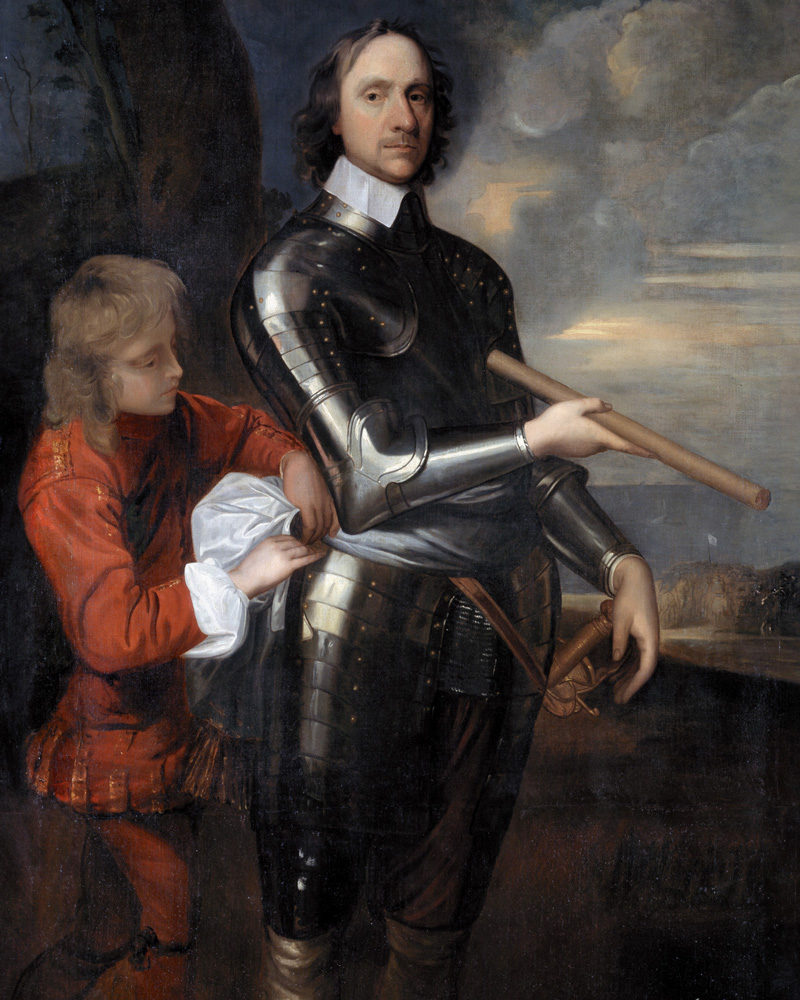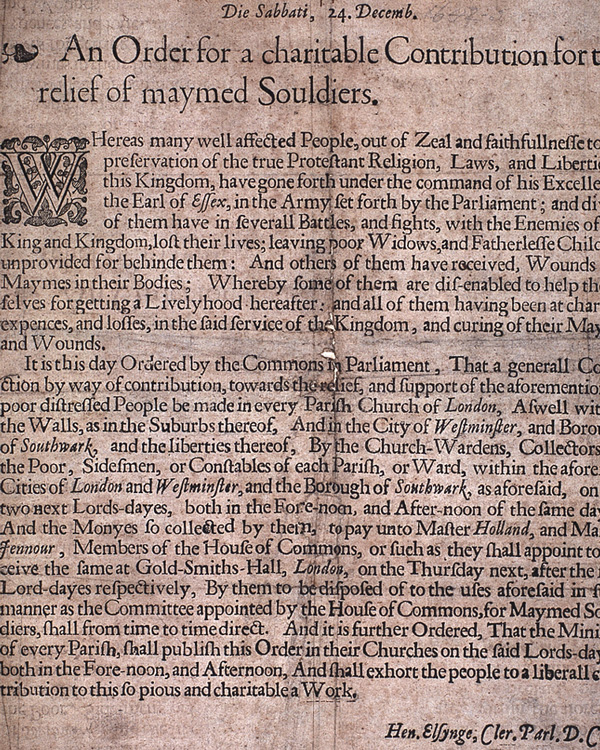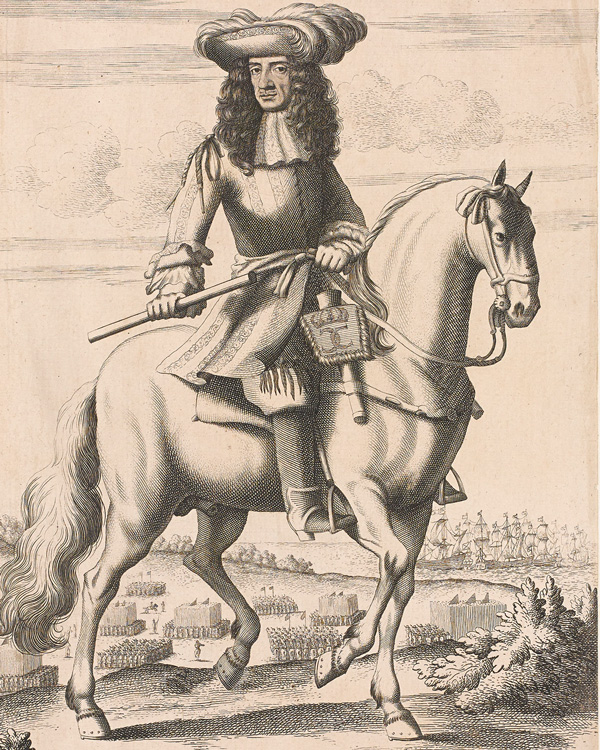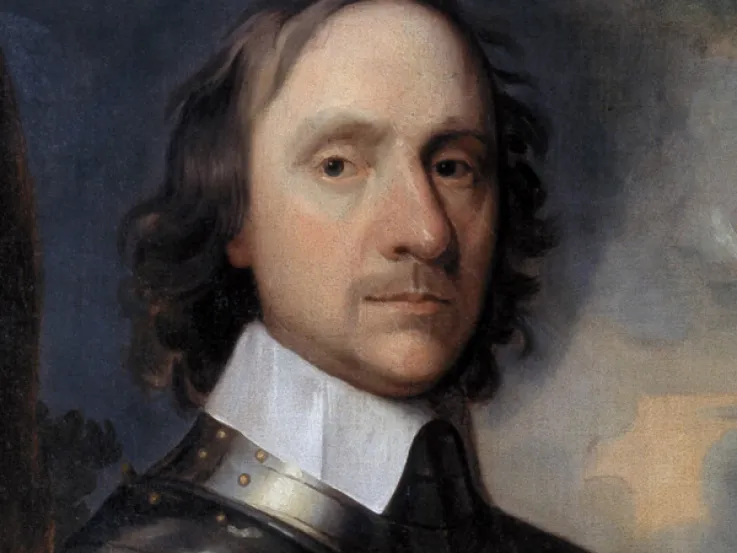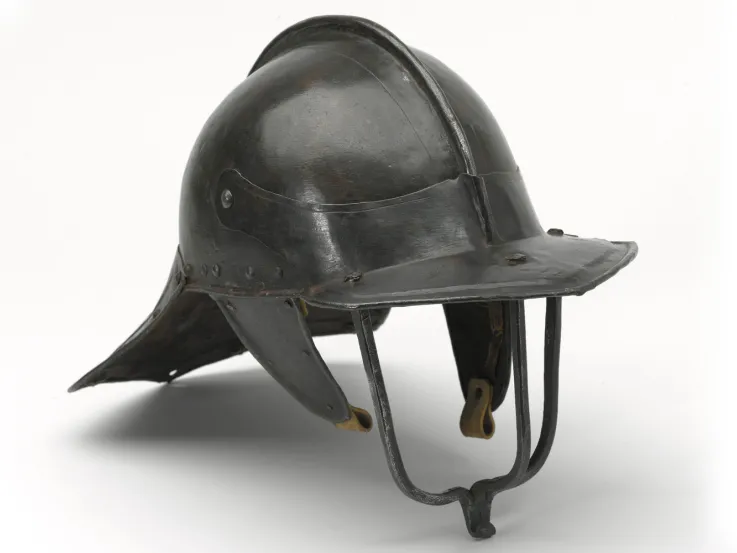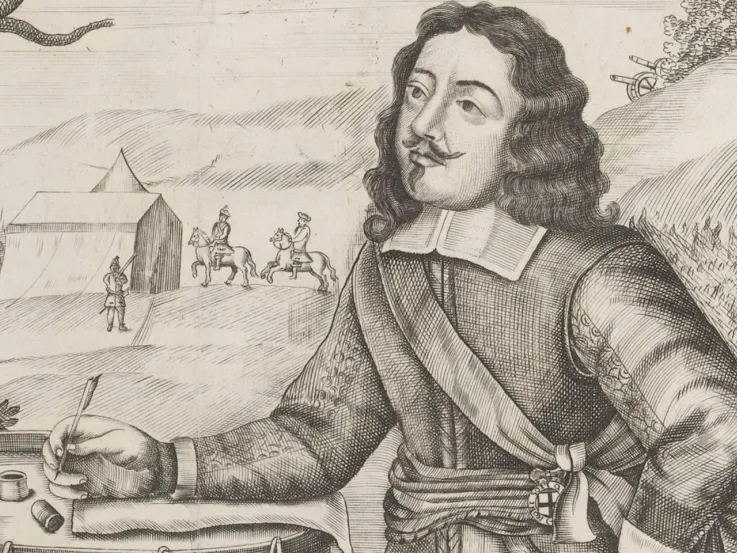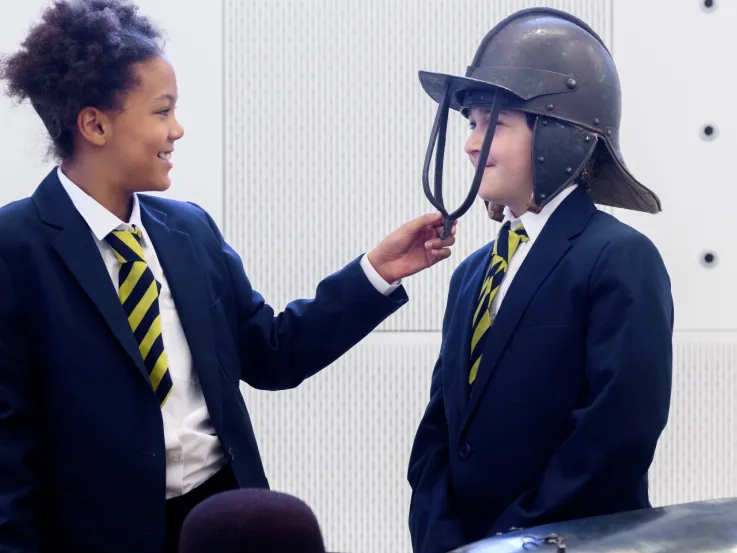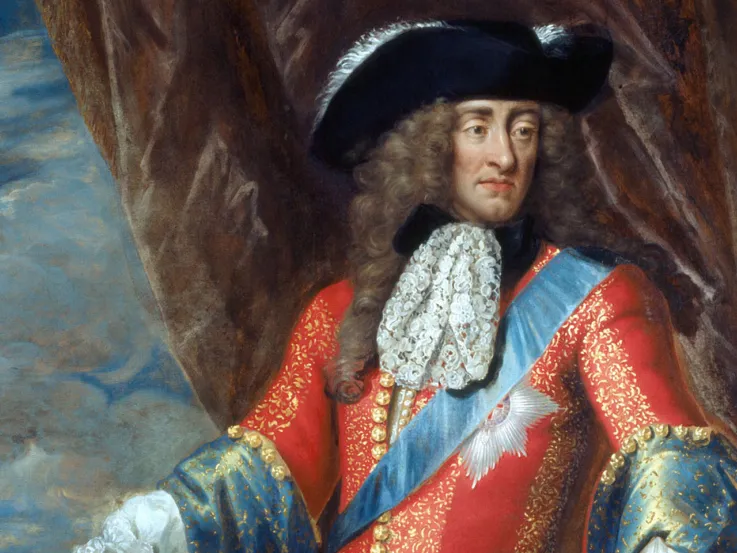British Isles
The English Civil War, as it is often known, should really be seen as a wider conflict. The fighting extended beyond England to Scotland, Ireland and Wales, affecting most areas of the British Isles in some way.
Personal rule
From 1629 to 1640, King Charles I ruled without Parliament, denying its involvement in passing laws and authorising taxes. To raise money, Charles resorted to a number of unpopular measures, such as the notorious ‘ship money’ (a tax to maintain the Royal Navy). But without Parliament, the nation had no outlet for the redress of grievances.
Religious differences
At this time, England was largely a Protestant country. There was widespread fear of Roman Catholicism, which was associated with oppression and with England’s traditional enemies, France and Spain.
Charles’s marriage to a Catholic, Princess Henrietta Maria of France, and his introduction of what were considered ‘popish’ practices into the English Church, aroused mistrust. The King’s foreign policy, which did little to assist Protestants abroad, was also viewed with suspicion.
Crisis in Scotland
In 1637, Charles attempted to impose religious changes in Scotland. This was met with immediate resistance. In 1639 and 1640, the King conducted two campaigns (known as the Bishops’ Wars) to enforce his authority. He was twice defeated by a Scottish army, which then occupied northern England.
Charles eventually agreed not to interfere in Scotland's religion and paid the Scots' war expenses. Faced also with the need to pay his English troops, Charles was in a desperate financial state. He was now forced to recall Parliament.
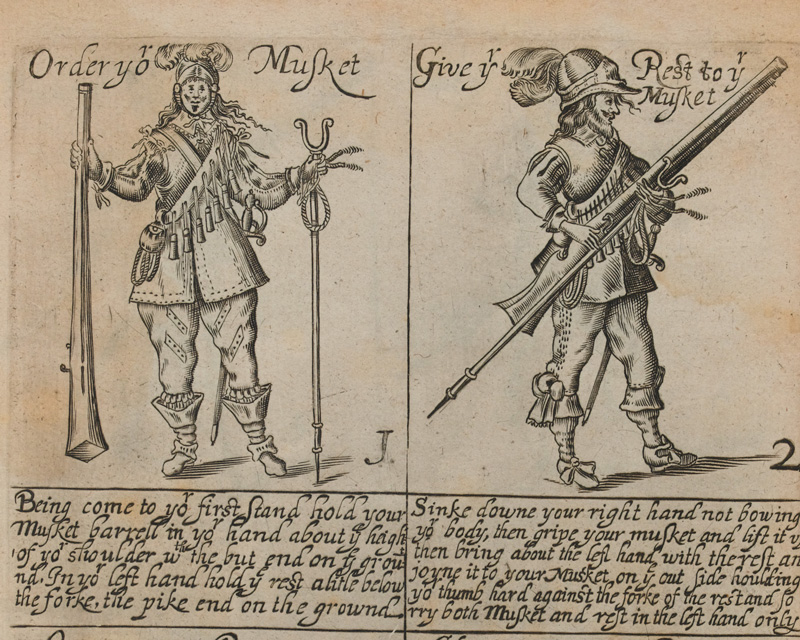
Musket drill from ‘The Military Discipline’, by Thomas Jenner, 1642
Parliament recalled
When Parliament met in 1640, Charles expected to be granted money and support against the Scots. Instead, Parliament embarked upon a programme of legislation to restrict the King’s powers and to eliminate the ‘popish’ practices from the Church. It also tried to gain control of England’s armed forces by means of a Militia Bill.
Two factions emerge
On Parliament's return in 1640, opposition to Royal policy was almost unanimous. However, within a year, suspicion of the Scots, alarm at the proposed extension of Parliament’s powers and fear of radical Protestant sects had all helped to revive support for the King.
Charles may well have secured further backing, but his refusal to compromise alienated many moderates.
Revolt in Ireland
In October 1641, emboldened by the King’s failure to defeat the Scots, Catholics in Ireland rose in rebellion, massacring Protestants in Ulster. Exaggerated tales of atrocities intensified the political crisis in England.
Some suspected that Charles himself was behind the rising. They feared that he would use any army raised for service in Ireland to suppress opposition in England.
Arrests
In January 1642, Charles was foiled in an attempt to arrest five Members of Parliament who led the opposition to his policies. He left London for York, and both sides prepared for war.
1629-40
Charles I rules without a Parliament
March 1639
Start of the Bishops' Wars in Scotland
February 1640
Needing money for his soldiers, Charles finally recalls Parliament
7 December 1640
Parliament declares ship money an illegal tax
October 1641
Start of Irish Rebellion
5 March 1642
Parliament passes the Militia Ordinance, taking control of army
4 January 1642
Charles tries to arrest MPs who oppose his policies
10 January 1642
Popular support for Parliament forces Charles to flee London
23 April 1642
Charles is refused entry to the arsenal at Hull
6 June 1642
Charles issues the first Commissions of Array
12 July 1642
Parliament resolves to raise an army, with the Earl of Essex commissioned Captain-General
22 August 1642
Charles raises his Royal Standard at Nottingham
First Civil War, 1642-46
In the months that followed, armies loyal to the King and Parliament fought for control of key cities and strongholds all over the country.
Parliament soon established control of most of the east and south-east of England. Support for the King centred mostly in the west, north and Wales. Elsewhere, loyalties were divided. And it was in these disputed areas that most of the fighting occurred.
Parliament's victory at Naseby in June 1645 proved to be the decisive engagement. This 'First Civil War' ended with the surrender of the Royalist headquarters at Oxford in June 1646.
23 October 1642
Battle of Edgehill ends in stalemate
13 November 1642
Royalist advance on London blocked at Turnham Green
30 June 1643
Royalist victory at Adwalton Moor secures northern England
26 July 1643
Prince Rupert takes Bristol, a high-water mark of Royalist fortunes
20 September 1643
Battle of Newbury ends in stalemate
11 October 1643
Army of the Eastern Association victorious at Winceby
Spring 1644
Scottish Army of the Covenant invades England in support of Parliament, threatening Royalist position in the north
2 July 1644
Prince Rupert is defeated at Marston Moor, breaking Royalist power in the north
31 August 1644
Last major Royalist victory of the war at Lostwithiel
Spring 1645
Creation of the New Model Army
14 June 1645
Royalists are defeated at Naseby
10 July 1645
New Model Army defeats last major Royalist army in the west at Langport
11 September 1645
Prince Rupert surrenders Bristol
13 September 1645
Scottish Royalists are destroyed at Philiphaugh
1646
The 'Levellers' call for radical political and social reform in England
5 May 1646
Charles I surrenders to the Scottish Army of the Covenant at Newark
24 June 1646
Surrender of Royalist headquarters at Oxford
'The air was so darkened by the smoke of powder that for a quarter of an hour there was no light seen, but what the fire of the volleys of the shot gave, and ’twas the greatest storm I ever saw'.Captain Richard Atkyns at the Battle of Lansdown, 1643
Taking sides
The coming of the Civil War in 1642 divided friends, families, and local communities. There was no such thing as a ‘typical’ Royalist or Parliamentarian. Soldiers on both sides fought for a variety of motives, and with varying degrees of enthusiasm. Religious conviction, mistrust of Royal power, local rivalry, economic discontent or loyalty to King, landlord, family or friends could all influence allegiances.
Self-interest also played its part. There was profit to be made from confiscated lands, while professional soldiers on both sides were suspected of wanting to prolong the fighting to keep themselves in employment.
Many of those who filled the ranks of both armies had little choice in the matter, often following the lead of their landlord or local gentry. If captured, they were often drafted into the opposing army.
Radical change
Some saw the conflict as a way of achieving radical political, social and religious change. They included 'Levellers' and 'Diggers', many of whom served in the Parliamentarian armies. Radical soldiers’ views were expressed at the Putney Debates of 1647, a series of discussions about the future constitution of Britain.
Many of the ideas expressed by soldiers and others challenged the entire social and political establishment of 17th-century Britain.
‘For really I think that the poorest he that is in England hath a life to live, as the greatest he; and therefore... I think it clear, that every man that is to live under a Government ought first by his own consent to put himself under that Government; and I do think that the poorest man in England is not at all bound in a strict sense to that Government that he hath not had a voice to put himself under.’Colonel Thomas Rainsborough at Putney, 1647
Raising armies
England had no standing army in 1642, yet both sides managed to raise and sustain large forces. The money and men they needed came from many different sources.
English and Scottish officers who had fought in Europe during the Thirty Years’ War (1618-48) provided valuable military experience. Both sides also employed foreign mercenaries.
England’s militia, based on the Trained Bands, was often reluctant to fight outside its own localities. Most other recruits came from the labouring classes, but many ‘gentleman volunteers’ also fought in the ranks, particularly in cavalry units.
‘I care not for your cause; I come to fight for your half-crown, and your handsome women.’Croatian mercenary Captain Carlo Fantom, c1643
Troop shortage
By the end of 1643, both sides were desperately short of soldiers and were forced to resort to local conscription. In August 1643, for example, Parliament passed an Impressment Ordinance that legalised the drafting of men ‘in every county, city, or place within this Realm'.
This did little to solve the problem as desertion was rife and local officials always tried to get rid of the worst men. Prisoners of war were also pressed into service.
Both sides were always short of money. They raised what they could by taxation, forced loans, gifts and outright plunder. The King also obtained supplies on credit in Europe.
As the war progressed, Parliament’s methods of raising money became very well-organised, allowing it to maintain first the army of the Eastern Association and later the New Model Army. In Scotland, the Army of the Covenant, which fought on Parliament’s side, was also centrally organised and paid.
New Model Army
Formed in 1645 from the remains of three older Parliamentarian armies, the New Model Army was a radical departure from the past - a national fighting force not tied to a region or locality.
Full-time, disciplined, ideologically motivated, regularly paid and commanded by officers promoted on the basis of ability, not blood, it was the most important force in the country. It became the model for a future British standing army. Indeed, many of its soldiers continued to serve after 1660 in the army of the restored King Charles II.
The New Model Army eventually secured victory for Parliament in the war, winning the decisive Battle of Naseby (14 June 1645).
‘I had rather have a plain, russet-coated Captain, that knows what he fights for, and loves what he knows, than that which you call a Gentleman and is nothing else.’Lieutenant-General Oliver Cromwell — 1645
Uniforms
The common belief is that Royalist ‘Cavaliers’ all wore large floppy hats with feathers, while Parliamentary ‘Roundheads’ wore what the Victorians called ‘lobster pot helmets’. This is a 19th-century myth. Both sides in the war would have looked similar and the quality of any item of dress would depend on the status of the wearer, not his allegiance.
Officers on both sides were members of the gentry. Most wore their own fine-quality civilian clothes under a buff coat and gorget. A sash worn over the left shoulder across the body, or around the waist, indicated an officer’s rank.
It was often difficult to distinguish friend from foe. To overcome this problem, both sides made use of field signs, such as a piece of white paper in the hat or passwords. But even so, mistakes were frequently made, sometimes with fatal consequences. Later on, the New Model Army wore distinctive red uniforms and its individual regiments were distinguished by the colours of their cuffs.
Soldiers' roles
Known as the 'Foot', infantry were usually organised in regiments. About two-thirds of a regiment was armed with a matchlock musket, the rest with a sixteen-foot, steel-tipped pike. Muskets were wildly inaccurate, but lethal at close range. Pikemen were needed to protect the musketeers from cavalry - no horse would charge onto the closely-packed points of their pikes.
Called the 'Horse', cavalry were also formed into regiments, but sometimes operated in independent troops. Ideally a cavalry trooper would possess a sword, a pair of pistols, helmet, buff coat, back and breastplate, and a steel gauntlet to cover his bridle hand. In practice, few were so lavishly equipped.
Dragoons were mounted infantry, who dismounted to fight. They were armed with muskets and swords.
Artillery pieces were fairly clumsy and difficult to move. They varied in calibre and their rate of fire was slow. They were more useful for sieges than on the open battlefield.
Many soldiers were employed on garrison duty in towns, and saw little fighting. A large number never left their own counties. To those with the field armies, however, the war meant frequent marches, cold, hunger, tiredness and disease.
Size
Most armies fluctuated in size during the conflict as a result of losses and desertion, but usually numbered in the thousands. At Edgehill (1642) both sides fielded about 14,000 soldiers. At Naseby (1645), the 9,000 Royalists were outnumbered by the 13,500-strong Parliamentarians.
The initial establishment of the New Model Army in 1645 was around 24,000 men. This was based upon infantry regiments 1,200 men strong, cavalry regiments of 600 troopers and a dragoon regiment of 1,000 soldiers. In practice, such unit strengths were rarely attained during the conflict.
'The enemy’s cannon...were somewhat dreadful when bowels and brains flew in our faces.'Sergeant Henry Foster at the First Battle of Newbury — 1643
Second Civil War, 1648-49
Although Charles’s forces had been beaten in the field, he still refused to reach a settlement, hoping to exploit the political divisions of his opponents. The King continued to negotiate in secret for support.
In 1648, there was a series of Royalist uprisings across England and Wales, and an invasion of northern England by the Scots. These were all defeated by Parliament's New Model Army.
The events of 1648 convinced Parliament that the King could never be trusted. In January 1649, he was brought to trial and found to have 'traitorously and maliciously levied war against the present Parliament and the people'.
Charles was executed outside the Banqueting House in Whitehall on 30 January. He is the only English monarch to have been executed for treason.
Ireland
Soon after, Oliver Cromwell landed in Ireland to defeat the supporters of Charles's exiled son and heir, Charles II. His bloody conquest completed the British colonisation of Ireland, which was merged into the newly formed Commonwealth alongside England and (from 1652) Scotland.
The invasion destroyed the native Irish Catholic land-owning classes, replacing them with colonists with a British Protestant identity.
January 1647
Scots surrender Charles I to Parliament
3 June 1647
Charles I is seized by the New Model Army
October 1647
New Model Amy's ‘Putney Debates’ on the future form of government
Autumn 1647
Parliament unable to reach a settlement with Charles I who refuses demands for a constitutional monarchy
December 1647
Charles I secretly negotiates for support in Scotland and elsewhere
March-July 1648
Royalist rising in South Wales
28 April 1648
Royalists capture Berwick-upon-Tweed
May 1648
Royalist rising in Kent is suppressed by Fairfax’s troops
June 1648
Royalist rising in Essex
June-August 1648
Siege of Colchester
8 July 1648
Scots invade England in support of Charles I
17 August 1648
Scots are defeated at Battle of Preston
6 December 1648
‘Pride’s Purge’ sees moderate MPs excluded from Parliament
1649
Gerrard Winstanley’s ‘Diggers’ establish a commune in Surrey
30 January 1649
Execution of Charles I
15 May 1649
'Leveller' mutiny crushed by New Model Army leadership
19 May 1649
Parliament declares England a Commonwealth
August 1649
Cromwell lands in Ireland to end support for the exiled Charles II
11 September 1649
Cromwell sacks Drogheda
11 October 1649
Cromwell sacks Wexford
April 1653
New Model Army completes conquest of Ireland
‘This is a righteous judgement of God upon these barbarous wretches, who have imbrued their hands in so much innocent blood and that it will tend to prevent the effusion of blood for the future, which are satisfactory grounds for such actions, which otherwise cannot but work remorse and regret.’Lieutenant-General Oliver Cromwell after the Siege of Drogheda — 1649
Third Civil War and Protectorate, 1650-58
In 1650, the exiled Charles II landed in Scotland and was crowned at Scone the following year. In a move designed to stop any possible Scottish invasion of England, Cromwell marched north in response.
At first out-manoeuvred by the Scots, Cromwell then destroyed a Scottish army at the Battle of Dunbar on 3 September 1650. Despite this, Charles himself then invaded England at the head of another army. This was defeated at Worcester on 3 September 1651 and Charles was forced back into exile.
Scotland was occupied and merged into the Commonwealth. Along with England and Ireland, it became part of a single republic ruled from London.
In 1653, Cromwell used the New Model Army to disband Parliament, irritated by its self-serving interests and slowness in developing political solutions for the Commonwealth. In the process, he became Lord Protector, continuing to rule until his death in 1658.
But Cromwell could not agree with his new Protectorate Parliaments either. After dismissing them, he instead ruled the country through his major-generals. England became a military dictatorship. This military involvement in politics created a popular suspicion of standing armies that lasted well into the 19th century.
27 April 1650
Marquess of Montrose’s Royalists are defeated at Carbisdale
24 June 1650
Charles II lands in Scotland
3 September 1650
Cromwell victorious at Dunbar
3 September 1651
Charles II is defeated at Worcester and forced back into exile
1652-54
First Anglo-Dutch War
December 1653
General Oliver Cromwell is appointed Lord Protector
1655-57
Major-Generals are appointed to supervise local government
3 September 1658
On Cromwell’s death, his son Richard is appointed successor
‘Many well affected people out of zeal and faithfulness to the preservation of the true Protestant religion, laws and liberties of this kingdom, have gone forth… in the Army set forth by the Parliament; and diverse of them have in several battles… lost their lives; leaving poor widows, and fatherless children unprovided for behind them. And others of them have received wounds and maims; whereby some of them are disabled to help themselves for getting a livelihood hereafter… It is this day ordered by the Commons of Parliament that a general collection by way of contribution, towards the relief and support of the aforementioned poor distressed people be made in every parish church in London’.‘An order for a charitable contribution for the relief of maimed soldiers’ — 24 December 1643
Cost
A recent estimate suggests that there were around 250,000 war-related deaths (military and civilian) in Britain during the conflicts - nearly 5 per cent of the population. This was a greater proportion than the 2.6 per cent of the population who died in the First World War (1914-18). Thousands of men were left maimed by the wars.
Deaths in Ireland probably numbered well over 250,000, possibly around 15-20 per cent of the estimated pre-war population.
Legacy
The Civil Wars ensured that kings and queens would never again be supreme in British politics. The monarchy was restored in 1660, with the accession of Charles II, but later Stuart and Hanoverian kings had a very different, conditional relationship with their parliaments compared to some of their Continental cousins.
The possibility of absolute monarchy died with Charles I. Indeed, attempts by another of his sons, James II, to strengthen Royal power - including using the Army as an instrument of political control - led to his downfall in the 'Glorious Revolution' of 1688.
This finally secured the primacy of Parliament over the monarchy. It also gave Parliament control over the Army, one of the issues that had helped spark the civil war.


